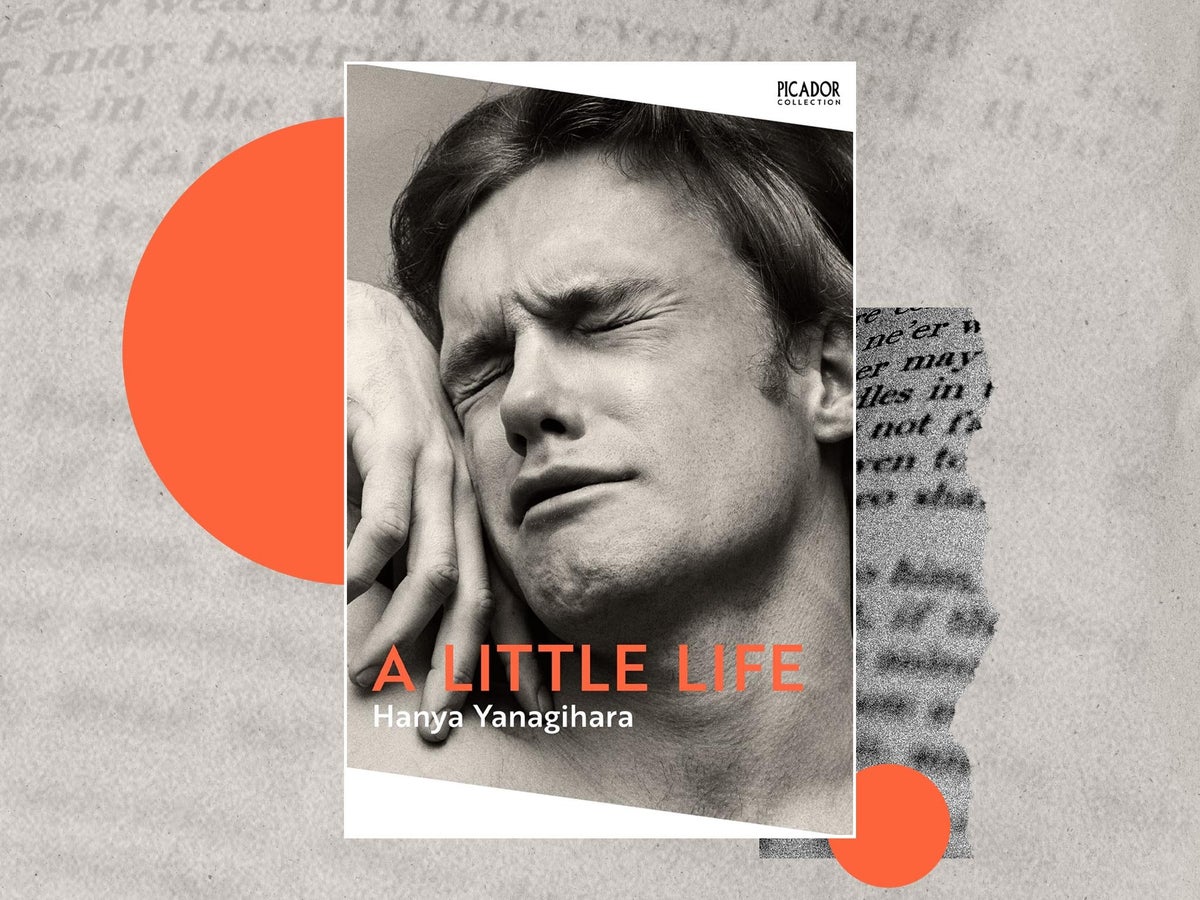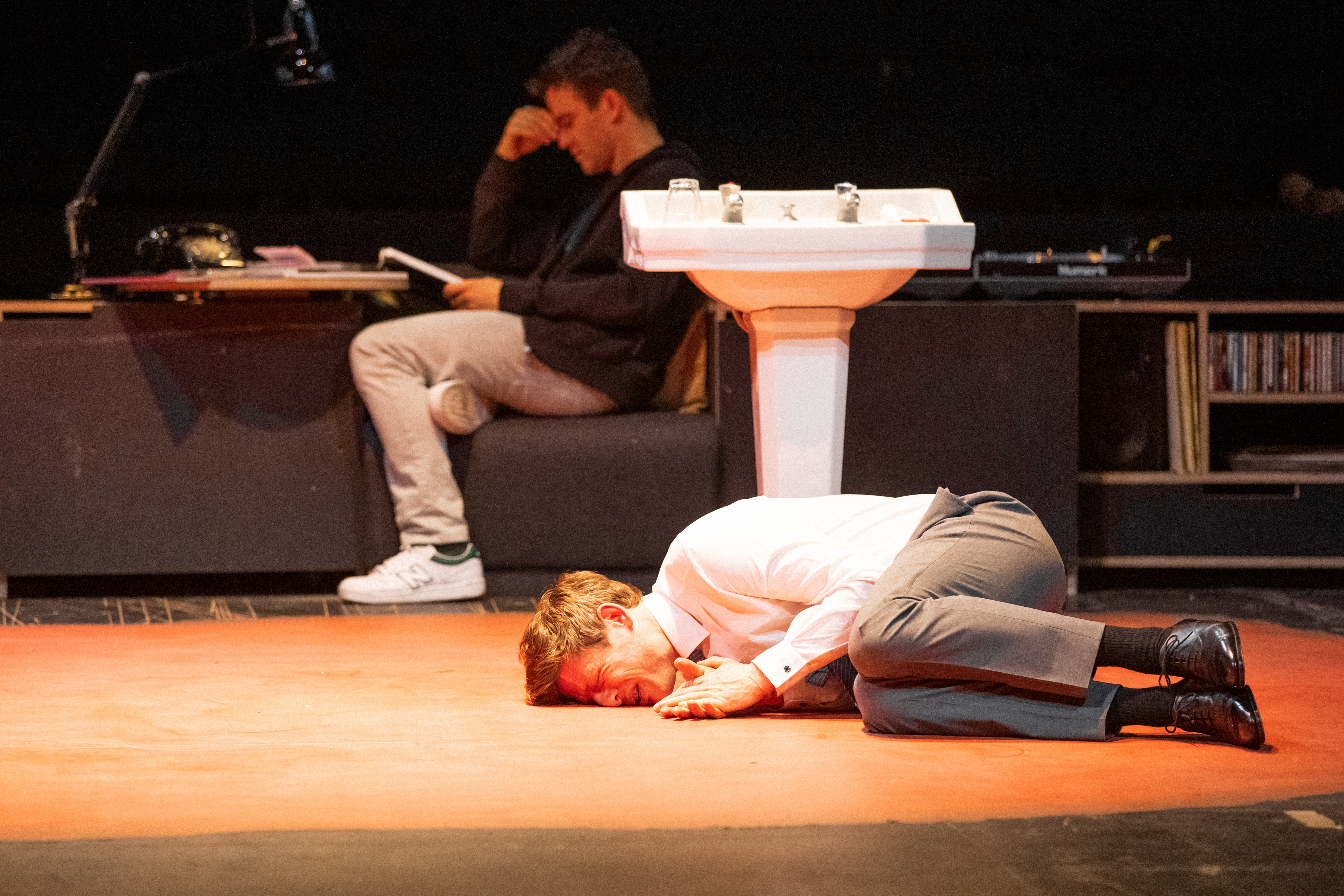
I read A Little Life in the autumn of 2016. It was a year after Hanya Yanagihara’s Booker Prize-shortlisted novel had been published, and a few days after I had been discharged from hospital. I’d spent two weeks on the urology ward, having multiple minor surgeries for a kidney issue that festered into sepsis. I was feeling raw, tender and embodied, and I had a lot of time on my hands. I thought my “recovery period” would be the perfect time to finally pick up the 800-page tome everyone had been talking about: the acclaimed and supposedly “subversive” work of literature that, I had been assured by friends and critics alike, would make me weep.
What greeted me was a narrative so saturated with suffering that it made my own sickness seem insubstantial. Even sepsis is small and puny in comparison to the trials, tribulations and complex trauma of Jude, the novel’s protagonist. At the start he is just one shadowy member of a group of four male friends in New York City, but over the course of the book he comes into sharp focus. His past, Yanagihara reveals, was riddled with physical and sexual abuse; his present is marred by extreme self-harm. Now, this gruelling narrative has been brought to life for a four-hour West End play, with James Norton starring as Jude. The scenes of self-harm are graphically depicted: after witnessing an audience member nearly pass out during the play’s brief run at the 2022 Edinburgh Festival, director Ivo van Hove said, “the show is deliberately physically intense, because Jude is full of pain”.
But, why does Jude’s pain become the central obsession of the story, all else falling away in its wake? Named by the monks who found him as a baby, abandoned in a bag by a bin, Jude St Francis is the mythic and mysterious crux of Yanagihara’s notoriously divisive novel. He is her Saint Jude, patron saint of hopeless causes, as well as her Jude the Obscure. Like Thomas Hardy’s famous character, Jude is an orphan who aspires to escape the circumstances of his upbringing; as Hardy wrote of his own novel, A Little Life also stages “a deadly war waged between flesh and spirit”. Yet Yanagihara’s Jude is obscure in another, more fundamental and contemporary way too. At one point JB – one of the quartet of ambitious, artistic, and affluent men at the heart of the book – describes Jude as “so genuinely uncategorisable that the normal terms of identity don’t even apply”. “We never see him with anyone, we don’t know what race he is, we don’t know anything about him,” JB, played by Omari Douglas on stage, continues. Jude is deemed “post-sexual, post-racial, post-identity” and dubbed “the post-man. Jude the Postman.” As other critics have noted, what’s missing is the one distinction that does define his identity: Jude, more than anything, is “post-traumatic”. Indeed, more than a real, human character, he is a scar – a living trace of injury.
If Jude is a scar personified, then reading A Little Life can feel like picking at scabs until they bleed. Central to the book is a sense that trauma creates an endless cycle of pain that is never able to heal. As The New Yorker put it on the book’s release, “cutting becomes a leitmotif. Every 50 pages or so, we get a scene in which Jude mutilates his own flesh with a razor blade.” One particularly graphic and revealing scene tells how Jude “has long ago run out of blank skin on his forearms, and he now recuts over old cuts, using the edge of the razor to saw through the tough, webby scar tissue: when the new cuts heal, they do so in warty furrows, and he is disgusted and dismayed and fascinated all at once by how severely he has deformed himself.” Upon its publication, it was scenes like this – among other relentless depictions of abuse – that prompted many readers and critics to accuse Yanagihara of having written “trauma porn”, and that are now causing audiences to pass out.
Yet, despite being a test for squeamish stomachs, in business terms the stage adaptation has been a roaring success, like the bestselling book before it. After unprecedented demand for tickets to its sold-out run at the Harold Pinter Theatre, the show will now be extended by five weeks at London’s Savoy Theatre in the summer. It seems people still can’t resist picking the scab, watching it bleed. Indeed, the apparent appetite of audiences, who will walk past content warnings and crisis helplines to witness Norton’s Jude cutting himself over and over, recalls the emotional response of Jude himself – “disgusted and dismayed and fascinated all at once”. It reminds me of the cover of Yanagihara’s book, emblazoned with American photographer Peter Hujar’s image of a man’s face, close up and contorted. A stricken subject, it seems, unless you know the photo’s title is “Orgasmic Man”, and these are the throes, not of agony, but ecstasy. Much as readers of A Little Life winced and wept and felt a cathartic release, will the audience flinch, grimace, and enjoy their evening entertainment? In seeking out these traumatic narratives, what are people attempting to control, escape or cope with? And, more importantly, what about the business of misery – will we ever stop finding pleasure in and making profit from pain?
If A Little Life’s Jude is “one of the most accursed characters to ever darken a page”, as New Yorker critic Parul Sehgal recently put it, he is far from unique – the last 25 years have seen a lot of dark pages. Indeed, the 21st century has, so far, displayed a peculiar predilection for narratives of pain and suffering. Before Yanagihara put pen to paper, this millennium was defined by reality TV sob stories, harrowing personal essays, and, of course, the misery memoir. Some trace the ignominious birth of this genre to Frank McCourt’s 1996 memoir Angela’s Ashes – a coming-of-age tale of courage and survival amid death and destitution – but the undisputed king of the booming business was Dave Pelzer. First in A Child Called It, and then in successive memoirs The Lost Boy, A Man Named Dave, and The Privilege of Youth, Pelzer told a story that would put even Jude St Francis’s to shame. One where, as a young boy, he had his face rubbed in soiled nappies, and was force-fed his own vomit. Readers lapped it up. By 2007, Pelzer had sold well over 3.5 million books in the UK alone, and publishers on both sides of the Atlantic were chasing the traumatised-kid-to-lauded-author gravy train. Harper Non-Fiction dubbed them “Inspirational Memoirs”, Waterstone’s labelled their shelves “Painful Lives”, but whatever they were called, from 2000 onwards, “misery lit” ruled the bookshops and bestseller lists. Volume after volume came the tales of predatory child abusers groping, hitting and burning terrified victims, all either titled with a dramatic punch – Damaged; Wasted; Abandoned; Sickened – or with pleading high emotionality – Don’t Tell Mummy; Please, Daddy, No.

But, of course, as soon as something becomes cliché it becomes stale. In the mid-Noughties, even as publishing houses were still embarking on a “misery lit” arms race – seeking ever more sensational stories of torture – there was a backlash. Writers, including Pelzer, were accused of fabricating details, and in some cases entire histories. Misery lit, like chick lit before it, was increasingly seen as a genre fit only for airports and supermarket aisles. In other words, cheap titillation akin to schlocky true crime documentaries and “Real Life” magazines. Indeed, in a 2007 Irish Times piece, Maria Dickenson, books purchasing manager at Eason’s, said of misery lit, “if you think about the public fascination with Madeleine McCann and what they’re going through, it’s the book equivalent of that.”
However, as A Little Life proves, the yearning for – and success of – misery literature didn’t dissipate; it just migrated. From 2010 onwards, the physical ordeals of misery memoir gave way to the traumatic narratives of contemporary literary fiction. For what else is Karl Ove Knausgaard’s six-volume series My Struggle than a confessional reckoning with trauma, truth, and memory? The adulated autofictional work of Kate Zambreno, Olivia Laing, Sheila Heti, Maggie Nelson and Leslie Jamison can be understood in this vein too, given their writing largely revolves around sadness, loneliness, abjection and failure. So too, in recent claustrophobic first-person portrayals of self-obsessed-but-self-hating Young Millennial Women (Naoise Dolan’s Exciting Times and Megan Nolan’s Acts of Desperation for example), and sharply deadpan novels that relate suffering from a remove, while also still obsessively picking away at the scab (such as Ottessa Moshfegh’s My Year of Rest and Relaxation, Ling Ma’s Severance, and Halle Butler’s The New Me). All are of a different tenor to the extremity depicted in the millennial child abuse romps, and to that of Yanagihara’s modern tale of martyrdom, yet at their core these literary works also seem to regard suffering as having creative value – to view the world through the prism of pain and trauma, and, consequently, to be judged as interesting and good directly in relation to the amount of suffering that is revealed and endured.

“In a world infatuated with victimhood, has trauma emerged as a passport to status?” Parul Sehgal asked in her 2022 New Yorker piece on “the Trauma Plot”, which dwells on A Little Life as an “exemplary incarnation” of contemporary writing about trauma. “The enshrinement of testimony in all its guises – in memoirs, confessional poetry, survivor narratives, talk shows – elevated trauma from a sign of moral defect to a source of moral authority, even a kind of expertise,” Sehgal suggests. In 2016, in my sick bed, I was a believer, easily swayed by testimony and trauma plots. Seven years later I’m more sceptical, and more attentive to whose afflictions are being marketed and used for entertainment – and who profits from misery. Because expressing exasperation at how trauma has become a literary trend is not to say people should be quiet about suffering. Rather, that to consume suffering as entertainment and ascribe value to pain only leads to a warped vision of victimhood, where everyone’s a victim and everyone is beyond repair. It’s a race to the bottom. Who has suffered more? Show me your scars.
Call it misery lit, trauma porn or the trauma plot – it all flattens suffering, turning it into a lucrative genre rather than a specific condition of the human experience. In a world where the very real pain of the most vulnerable in society often goes overlooked, perhaps we now need less suffering saints tugging on heartstrings, and more clear-eyed accounts of how abuse, violence and victimisation do not emerge in a vacuum. They come, instead, from systems of power and control that feed off a hierarchy of victimhood. Perhaps, we can look back on the past two decades of confession and testimony, trauma and misery, and truly say we’ve all suffered enough.
‘A Little Life’ runs at the Harold Pinter Theatre until 18 June







